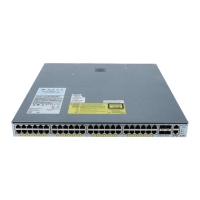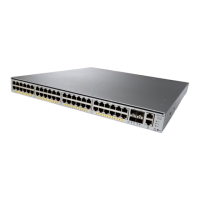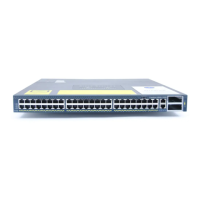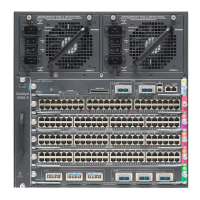136 Cisco LAN Switching Configuration Handbook
Configuration
1. Specify the HSRP group number and IP address:
(interface) standby [group-number] ip [ip-address [secondary]]
The VLAN interface participates in HSRP group group-number (0 to 255, default 0)
as HSRP IP address ip-address. Use the secondary keyword if this address corre-
sponds to a secondary address on the actual VLAN interface. This enables HSRP
addresses to be activated for both primary and secondary interface addresses.
The group number and the IP address should be the same across all Layer 3 devices
participating in HSRP on the VLAN. This also makes the HSRP virtual MAC address
identical on all the HSRP devices.
Tip It is common practice to use the VLAN number as the HSRP group number for con-
venient reference. However, the Catalyst 6500 2 with PFC2/MSFC2 combination supports
only up to 16 different HSRP groups (each numbered 1 to 255). You can, however, reuse a
group number on several VLAN interfaces if no bridging exists between the VLANs.
2. (Optional) Set the HSRP priority:
(interface) standby [group-number] priority priority [preempt [delay minimum
delay]]
The interface negotiates with other HSRP devices in the group to become the active
device. Assign a priority (1 to 255, default 100) value to each HSRP device so that
the one with the highest priority (255 is the highest) becomes active. Adjust the pri-
orities of all other devices to achieve expected elections if the active device fails.
If the active device (highest priority) fails, it waits until the new active device (lower
priority) fails before becoming active again. Use the preempt keyword to enable the
device to immediately take over the active role again. You can add the delay mini-
mum keywords to cause preemption to wait until delay (0 to 3600 seconds, default
0 or no delay) time after the Layer 3 switch has been restarted. This allows a period
of time for the routing protocols to converge.
3. (Optional) Use HSRP authentication:
(interface) standby [group-number] authentication string
By default, any device can participate in HSRP communications. You can use the
authentication keyword to force HSRP devices to authenticate with one another by
using string (text string, up to eight characters) as a clear-text key.
4. (Optional) Tune the HSRP timers:
(interface) standby [group-number] timers [msec] hellotime [msec] holdtime
You can adjust the time between HSRP hello messages to hellotime (1 to 254 sec-
onds, default 3 seconds, or 50 to 999 milliseconds, by using msec.
